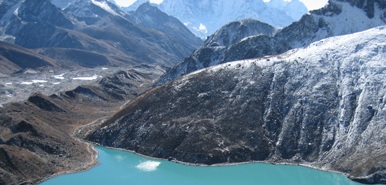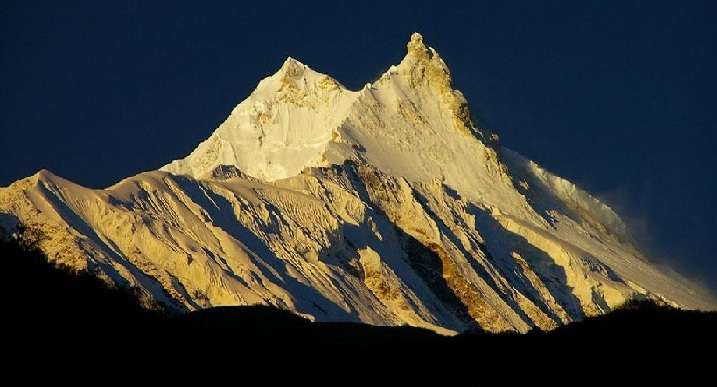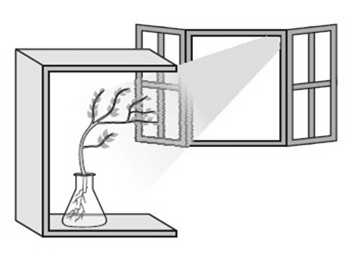Image: Wikipedia Melting Glaciers of Himalaya
Fighting against the Climate Change which has become the biggest problem of environment is a big challenge of today.
During the last 2500 years the temperature is rising at the rate of 0.5 to 01 degree Celsius per century. It has impacted the world climate. As a result the irregularity in rainfall, drought, ice-fall, cyclone etc. has come before us in more intensity.
The impact of climate change is seen more in those areas that play greater role in the climate formation. Along with deserts, oceans and rivers, Himalaya is also one of these areas. This mountain range that is close to India is a part of the ice-region of Indian sub-continent and the Asian continent.
Himalaya covers a total of 5.95 lakh sq Km in area. This is the origin place of many rivers saturating the whole area with water. This area has about 10,000 glaciers. It is due to the ice contained in this area that this is called as the third pole of the earth.
The rivers emerging out of the Himalayan glaciers satisfy the daily water requirement of 50 crores people per day. The development and the socio-economic conditions of the human population inhabiting the whole area depend on this water. Since this area has a high level of biodiversity, this has been a subject of overexploitation since decades.
The data pertaining to the last 150 years reveal the story of the climate change in the Himalayan area. The air temperature of this area has already gone up by 1.1 degree Celsius per one hundred years. In winters this rate went up by 1.2 degree Celsius per 100 years. This growth of temperature is greater than the areas of other mountain ranges like Alps and others. A decrease has also been observed in the Monsoon and Non-Monsoon rainfall in these areas, though cases of sudden above average rainfalls have been observed.
Decrease in snow-fall has also been observed from some years in these areas. The stability of ice has also been decreased due to rise in the air temperature. Due to high temperature in November and March snow fall and winter start late and remain up to late periods. The spring season also starts earlier.
All the glaciers in the north –west are decreasing in size due to global warming. The small glaciers are melting fast whereas the speed of melting of big glaciers has decreased. Not only the length of these glaciers is decreasing fast, the volume of ice too is reducing fast in the same ratio.
The impact of human activities and human population is increasing in these areas. The unplanned development is going on in fast speed. Many times a correct evaluation of their impact on environment is also not done. All these activities are causing great impacts on the existence of the life giving Himalayas.

In the upper areas of Himalayas where glaciers are melting fast and their areas are decreasing, new areas are developing in these segments due to these processes. These new areas are becoming more sensitive or fragile. These can be eroded fast producing lots of debris. As a result the whole land area moves towards the valley below due to heavy snow-fall and melting of glaciers. Many times this debris blocks the flow of a river forming a vast lake. Due to heavy logging of water, when this lake breaks, it starts causing destruction in the populated areas. All this and much more have occurred in Chamoli.
Now, it is clear that glaciers are melting due to increasing global warming. A great challenge can emerge out against humanity on this globe due to it. Crores of people may be encircled with a disaster of flood, or may face severe drought conditions. A dangerous soft-water crisis may follow.
If all the glaciers are combined, they will form an area equal to the area of South America. These are the greatest stores of soft water. The event of their melting started since 1850 but the process of melting has taken speed during the following decades. As the prediction about increase in the global temperature is made, average global temperature may rise from 1.4 to 5.8 degrees Celsius. If this increase touches the point at 4 percent, the earth will lose all its glaciers.
In India, the Sundarbans may be lost forever causing extinction of the Royal Bengal Tiger and many more species of plants and animals. In the event of the rising sea levels all the coral reefs may disappear. About 4000 cubic km of water has been lost since 1960 from the global glaciers. This loss is even greater than the annual flow of all the major rivers of the world.
Key Words : glaciers of Himalaya, linked to our existence, Sundarbans, Climate Change, global warming




